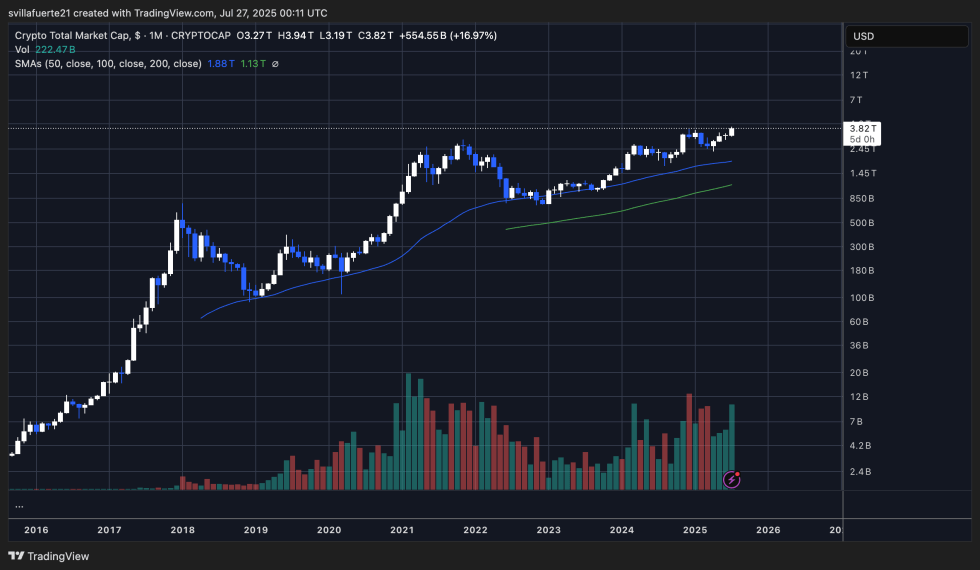Matt Hougan Declares the 4-Year Crypto Cycle Dead – Welcome to the New Era of Digital Assets
The old crypto playbook just got shredded. Bitwise CIO Matt Hougan drops a truth bomb: Bitcoin’s predictable 4-year boom-bust rhythm is officially obsolete. Here’s why your portfolio needs a hard reset.
The New Rules of the Game
Institutional money isn’t knocking anymore—it kicked down the door. With BlackRock’s ETFs sucking up supply like a financial vacuum and nation-states stacking sats, retail’s ‘buy the halving’ strategy looks quaint. The 2025 market moves at hedge fund speed.
Liquidity Tsunami Ahead
Forget counting mining rewards. The real action? Trillions in legacy finance assets tokenizing on-chain. Real estate, equities, even that overpriced Degas in your CFO’s office—all heading for blockchain rails. (Cue Wall Street’s sudden ‘blockchain not Bitcoin’ epiphany.)
Survival Mode Activated
Projects without clear institutional utility are walking dead. Meanwhile, compliant DeFi protocols and SEC-friendly staking plays are eating the market. The ‘4-year cycle’ didn’t die—it was murdered by Form S-1 filings.
The revolution got a西装 and a Bloomberg terminal. Adapt or get rekt.
Long-Term Forces Reshaping Crypto’s Market Structure
According to Hougan, each halving becomes “half as important” every four years, reducing its impact on market momentum. Unlike 2018 and 2022, when the interest rate environment added pressure to risk assets, today’s monetary backdrop is more favorable to crypto.
Additionally, blow-up risks from unregulated players are fading as regulation improves and institutionalization advances. Hougan notes that the rise of regulated entities and better transparency has stabilized the market and removed some of the cyclical fragility.
He also points to a more significant, emerging risk: the growing influence of Treasury companies that hold and MOVE large amounts of crypto. Their potential to influence markets on a short-term basis is substantial and worth monitoring.
At the same time, larger forces are now in motion. The shift of capital into crypto ETFs marks the beginning of a 5–10 year trend that started in 2024. Institutional adoption is only just beginning, with pensions and endowments starting to explore the asset class. Regulatory momentum kicked off in January 2025, and Wall Street capital is only beginning to FLOW following the passage of the Genius Act this month.
“These long-term pro-crypto forces will overwhelm the classic ‘four-year cycle’ forces,” Hougan said. He believes 2026 will be a strong year—not because of another hype-driven surge, but because of what he calls a “sustained steady boom” rather than a super-cycle. While acknowledging that volatility will persist, Hougan emphasizes that crypto’s maturation is real and accelerating. Investors may need to recalibrate their strategies for this new era.
Crypto Long-Term Trend Strengthens
The monthly logarithmic chart of the total crypto market cap reveals a clear long-term uptrend, currently sitting around $3.82 trillion. After a prolonged consolidation phase that began in mid-2022, the market has steadily climbed and is now approaching its all-time high range NEAR the $3.9 trillion–$4 trillion mark. This level acted as a significant resistance zone during the previous cycle and remains a key psychological barrier.

From a technical perspective, the 50-month simple moving average (SMA) continues to slope upward and currently sits at $1.88 trillion, well below the current market value, reflecting strong macro support. Additionally, volume has picked up significantly in recent months—especially during the last two green candles—indicating renewed investor confidence and institutional inflows, consistent with the narrative of growing ETF adoption and broader regulatory clarity.
The market structure also shows higher lows and higher highs on the monthly timeframe, signaling that the bullish trend remains intact. As long as the crypto market cap continues to hold above $3.2 trillion and makes another monthly close above $3.8 trillion, the probability of a breakout toward uncharted territory increases significantly.
Featured image from Dall-E, chart from TradingView

